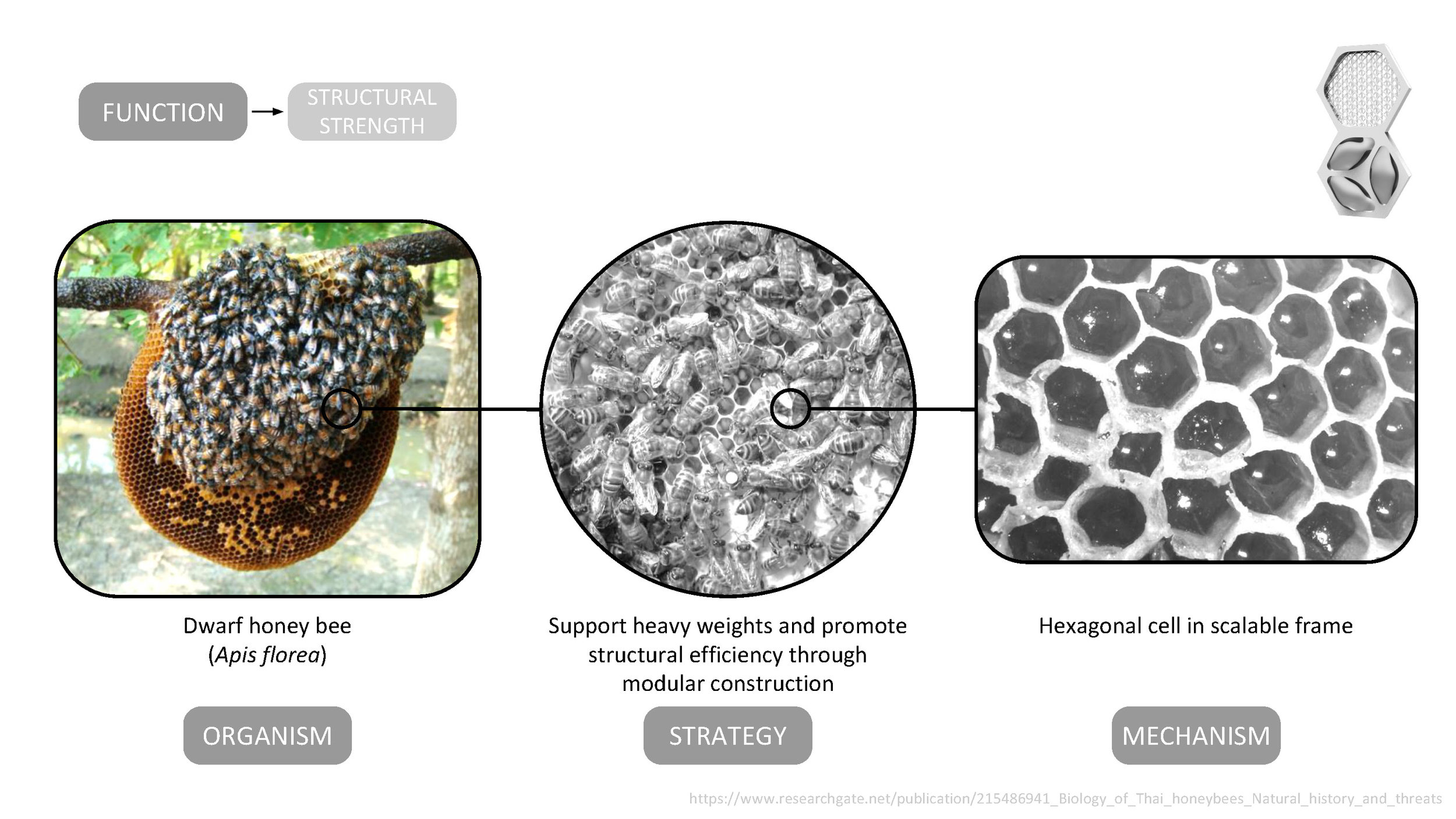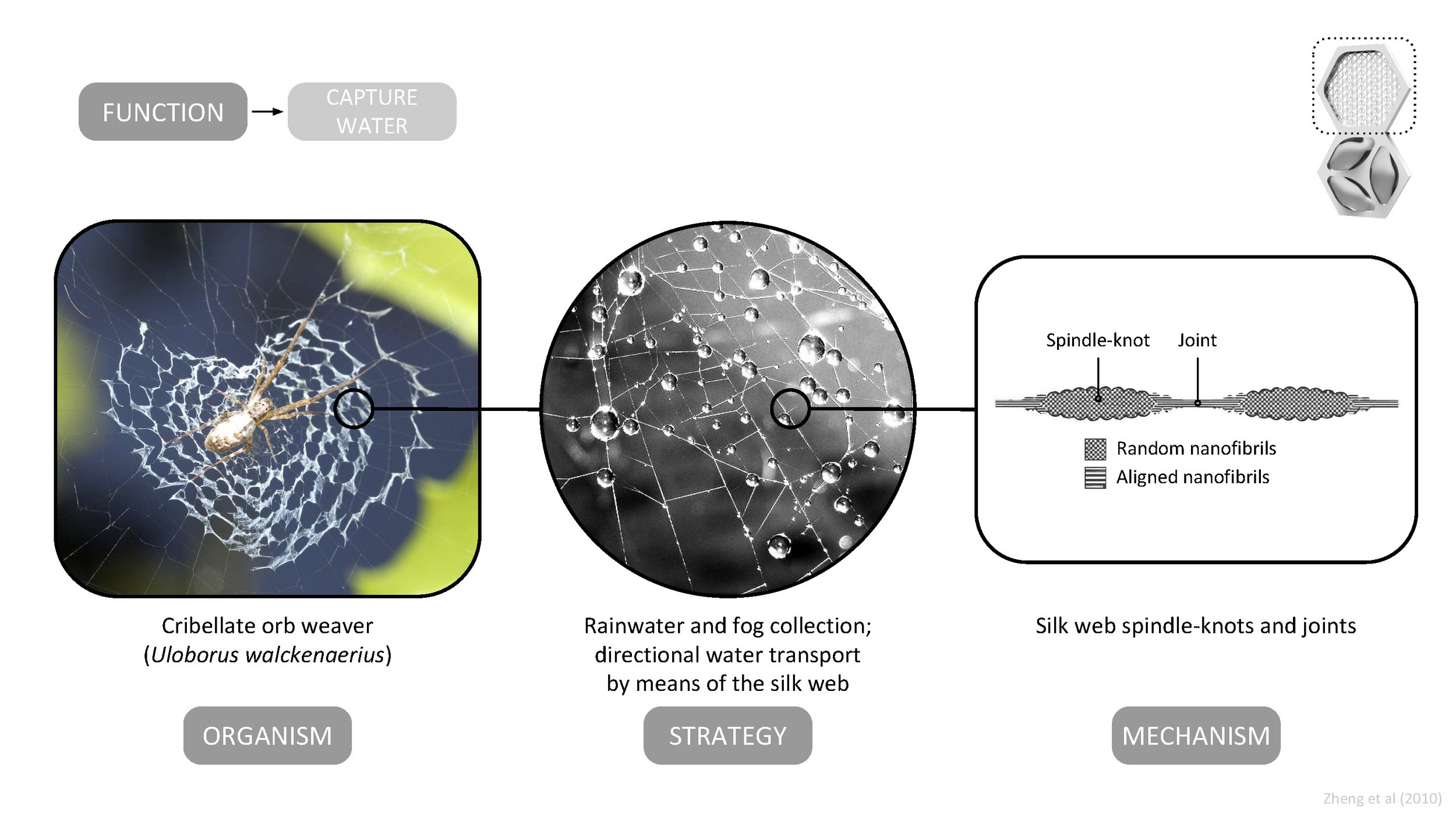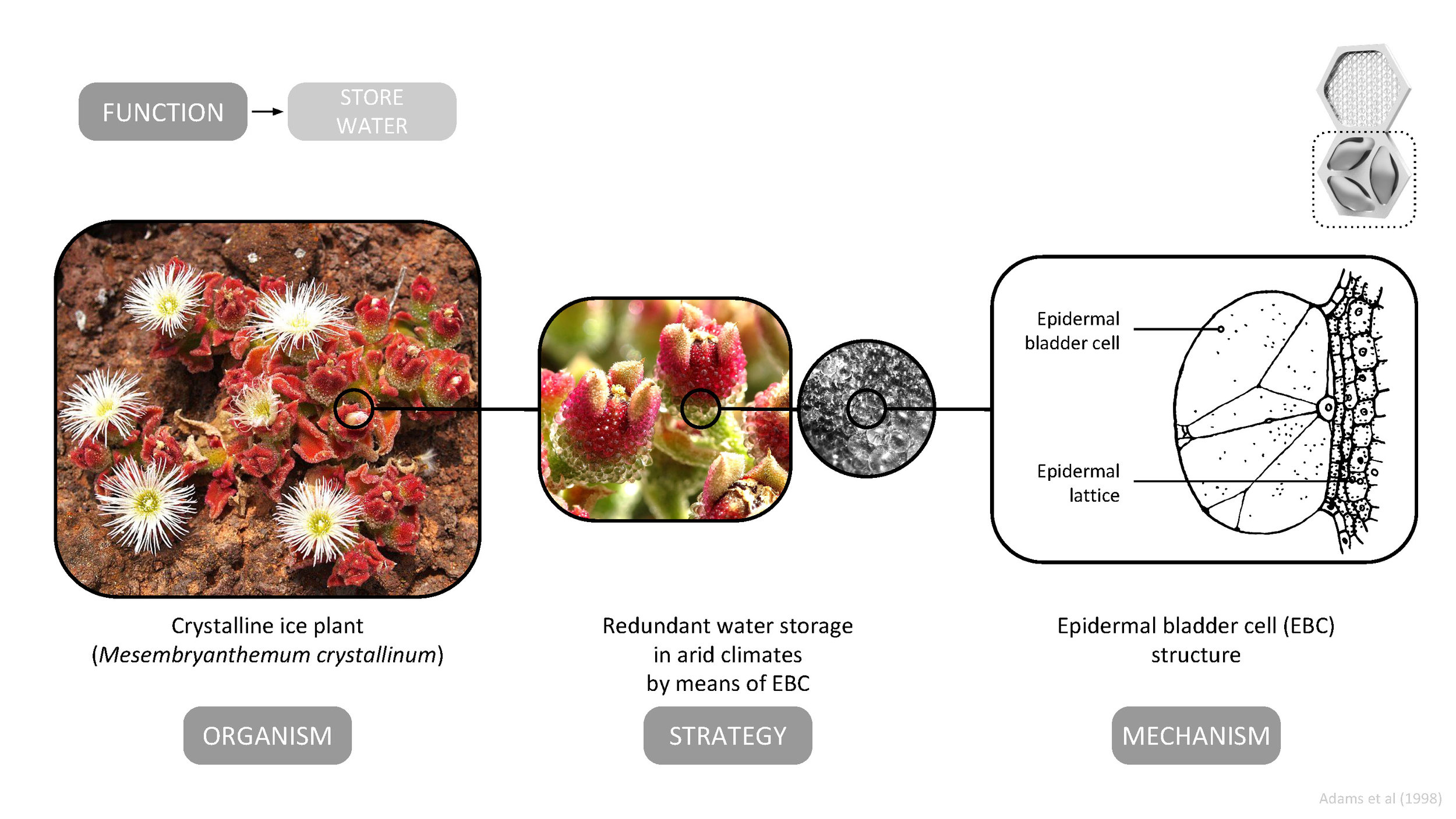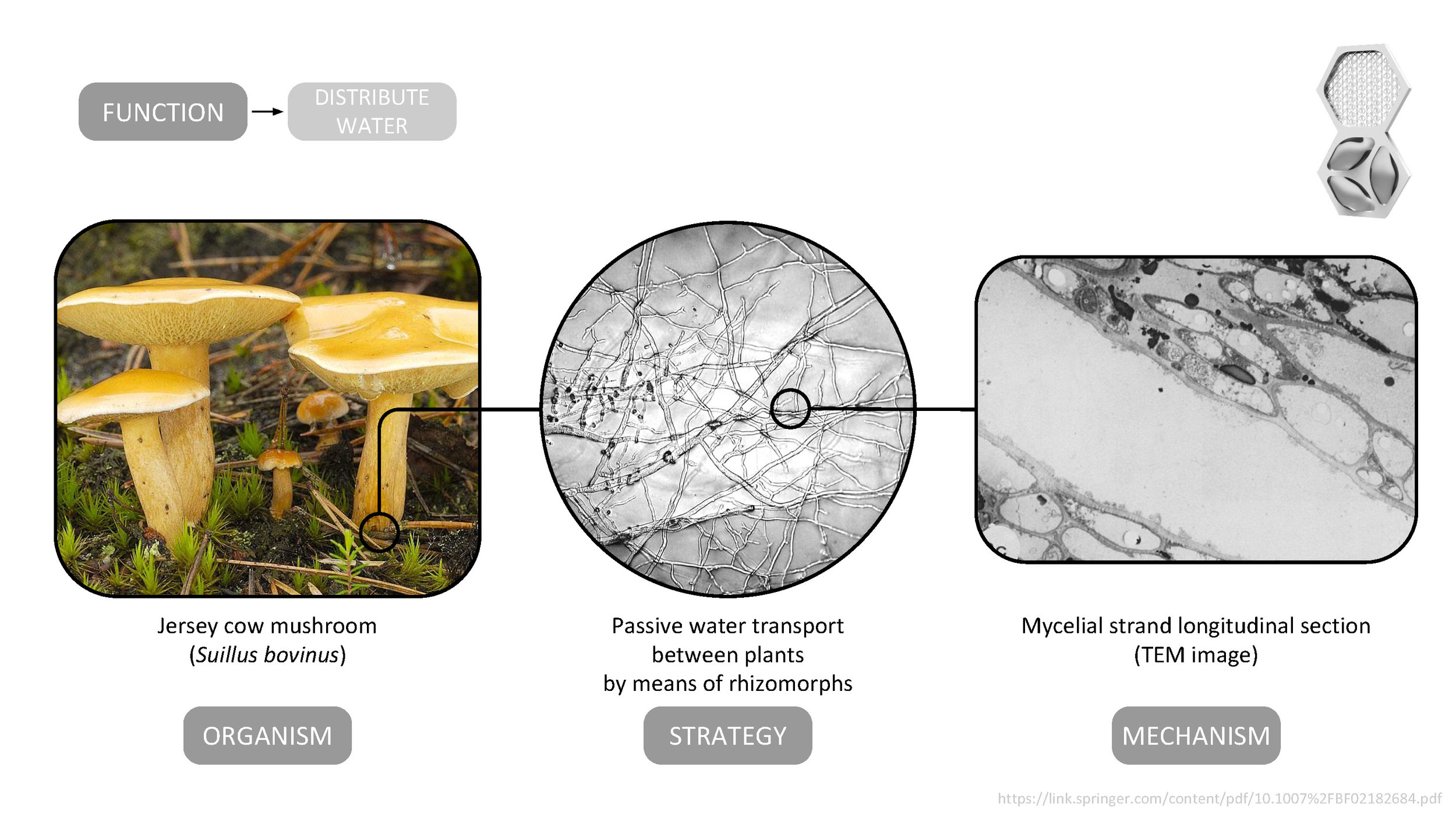




The AquaWeb module is a multifunctional biomimetic system to integrate water capture, filtration, storage and distribution into food production building envelopes such as greenhouses and container farms.
NexLoop, an international team with members Jacob Russo (B.Arch ’14), Anamarija Frankic, and C. Mike Lindsey, won the 2017 $100,000 Ray of Hope Prize® for their AquaWeb innovation. The Grand Prize was awarded at the Bioneers Conference in San Rafael, California, in October 2017.
Each year 5-10 finalists in the Open Category of the Biomimicry Global Design Challenge are invited to participate in the Biomimicry Accelerator program. Designed to help biomimetic solutions advance beyond the concept stage, the Biomimicry Accelerator is an intensive year-long program during which teams continue to develop their design concepts and market strategy utilizing business training, mentorship, and legal support provided by the Institute and its partners. At the end of each Accelerator, one team is awarded the $100,000 Ray of Hope Prize, endowed by the Ray C. Anderson Foundation.
Team NexLoop developed the AquaWeb to help urban local food producers collect, filter, store, and distribute atmospheric moisture with a modular, all-in-one water sourcing and management system. AquaWeb harnesses freely available rain and fog and uses passive strategies to distribute this water so that urban farms, including greenhouses, indoor vertical farms, and container farms, can save energy and become more resilient to disturbances. Each aspect of AquaWeb’s design was inspired by living systems. These include how cribellate orb weaver spider webs collect fog from the air, how drought-tolerant plants like the crystalline ice plant store water, and how mycorrhizal fungi like the Jersey cow mushroom distribute water. The team also looked to the dwarf honey bee’s hexagonal nest structure for AquaWeb’s efficient and modular design.
Read more in the official press release from the Biomimicry Institute
